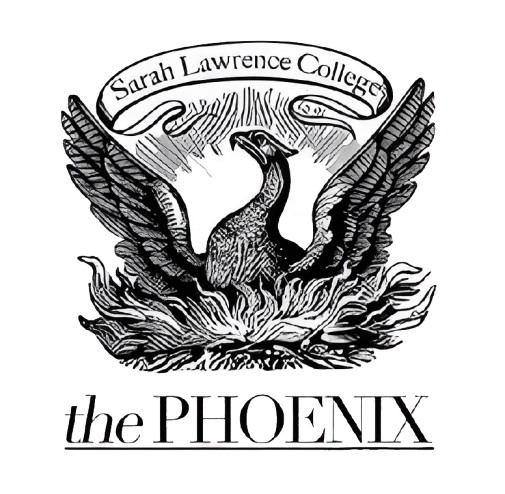Into the Rose Garden: Mary Temple’s Blurring of Time in Heimbold Exhibit
Nicole Imral ‘27
The front gallery wall at Heimbold exhibit, “And Roses Too.” Photo Credit: Nicole Imral
Footfalls echo in the memory
Down the passage which we did not take
Towards the door we never opened
Into the rose garden.
–T.S. Eliot, Four Quarters
Upon entering the Heimbold exhibit “And Roses Too,” one is immediately struck by the passing of time. The paintings are small vignettes of each season, arranged in such a way that the casual observer can stroll from one side of the room to the other and pass through a year of nature’s lush flourishing. The “Limelight Hydrangea” beckons you to step into the sun’s sultry summer embrace, encouraging you to recline in warm respite, if only for a few seconds. By walking only a few steps over, you’re taken into a reflective “Snowscape,” gazing at barren branches as a clear winter breeze cools your skin. Each painting seems to ask its viewer to take a moment for themselves as time passes by.
MARY TEMPLE. Limelight Hydrangea, 2023, oil on panel, 16 x 16 in. Photo Credit: Nicole Imral
MARY TEMPLE. Snowscape I, 2024, oil on birch panel, 20h x 24w in. Photo Credit: Nicole Imral
Artist Mary Temple says the works are inspired by her morning walks through Brooklyn. Using an “alla prima” technique, which involves painting additional layers atop still-wet oil paint, time is of the essence in capturing these fleeting harmonious moments. Temple must ensure that she finishes adding any successive layers of paint before the first layer dries. She uses this brief window to obfuscate any clear form that could be derived from her floral subjects, inundating her work with a subtle sense of abstraction. Temple says that this “fast-paced” style pushes her to “take risks rather than to make safe choices,” even if it increases the possibility of her discarding a failed piece. She wants the work to build off itself — for viewers to build a relationship with the piece.
In an interview with writer and artist Sarah Rose Sharp, Temple says that if her paintings become “too representational early in the process,” she feels as though she can “kind of understand [them] too soon.” Dragging each layer of paint through the other allows Temple to disorient her audience, providing them with a familiar scene while asking them to question what they’re looking at.
Temple is not newly acquainted with prompting her subjects to make such visual inquiries. Much of her earlier catalog is occupied by “Light Installations,” paintings that occupy entire rooms with the silhouettes of trees and other assorted flora. By painting only the outline of light around these objects, she provides her viewers with the illusion that one is looking at the shadows of these absent figures. It is only when attempting to block the light and cast off the shadow that spectators realize what they’re seeing isn’t quite what it seems.
MARY TEMPLE. Northwest Corner, Southeast Light, 2011. Photo Credit: Nash Baker, courtesy of Rice Gallery.
The abundance of floral oil-on-canvas paintings that make up “And Roses Too” seems to be a significant departure from Temple’s “Light Installations,” which she developed from 2001 to 2015. It wasn’t until 2022, following her mother’s passing, that Temple decided to take up this new style.
In the aforementioned interview with Sharp, Temple explains, “Painting flowers helped me grieve.”
Prompted by the condolence bouquets she received, the artist felt that a focus on this new subject allowed her to access a concrete sense of beauty and peace during turbulent times. French anthropologist Marc Auge considers mourning to be the foremost event that leads people into “temporal dislocation,” striking down the linear progress of time. This then leads them into what he considers to be a “non-space” or time outside of time.
Temple says that focusing on a more concrete subject provided her with an “immediate sense of well-being… providing an opportunity for [her] brain to concentrate on something other than coping with loss.”
A sense of grief is not immediately evident in “And Roses Too,” as each painting’s brilliant hues feel joyous and exuberant. Still, the process of bereavement comes across in the exhibit as a place of rest and consciousness outside of daily life. Temple gives us a place to reflect on what has been, though the cyclicality of the seasons emerges to gently push us forward.
In regard to her “Light Installations”, Temple says that she wants to invoke a singular “moment of calm,” placing the viewer’s “brain in a state of repose.” This seems to be the thread linking “Light Installations” with “And Roses Too.” Both of these works want you to be caught in the ease of one beautiful never-ending day, at the precise moment when your gaze catches the hydrangea’s blossom or the glint of light off a frozen pond. Temple wants to give you a moment of stillness, even as the world rushes by in the distance.




